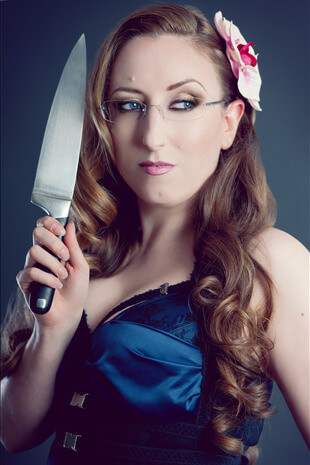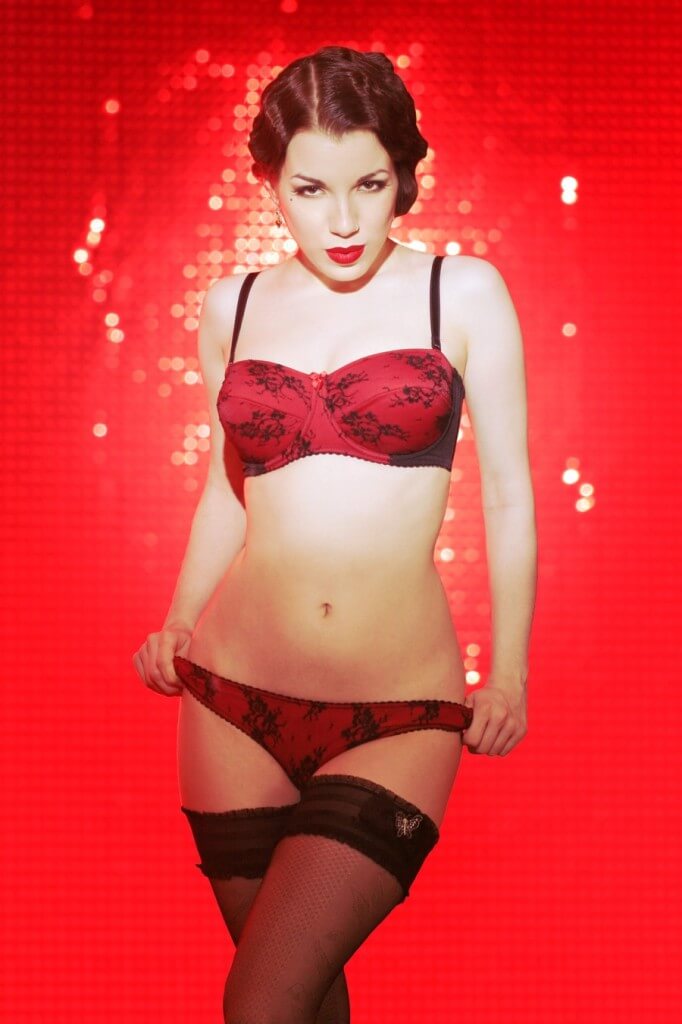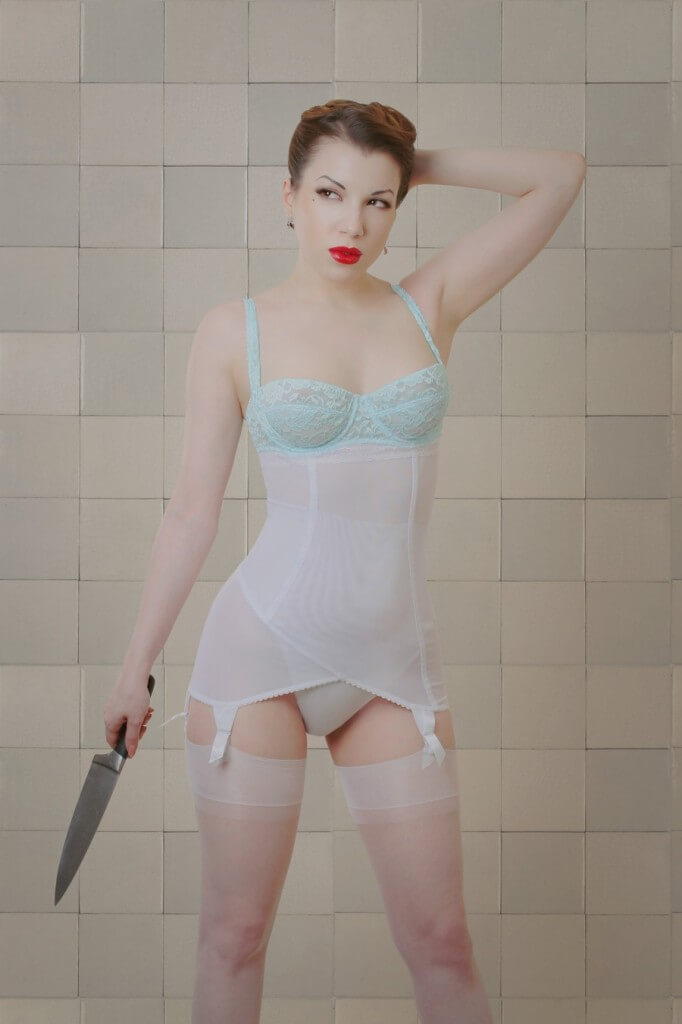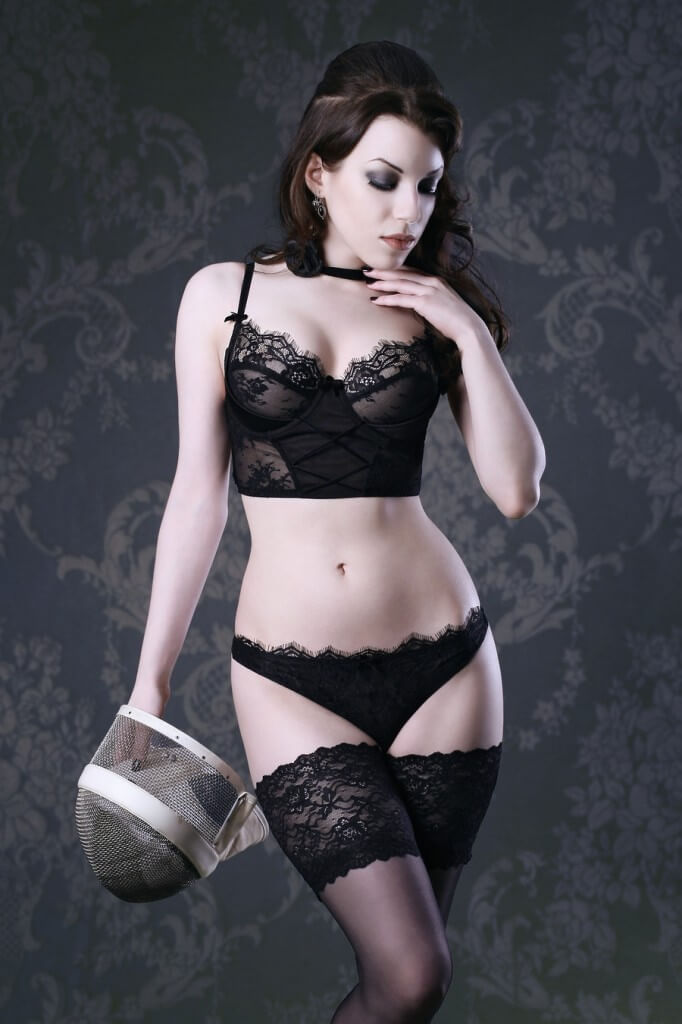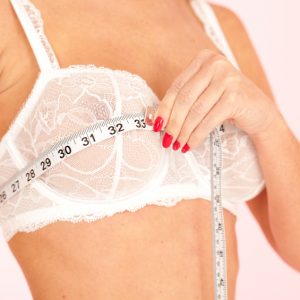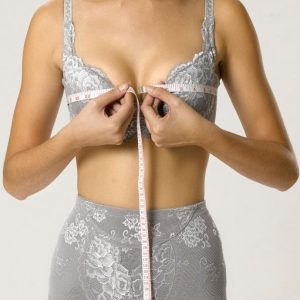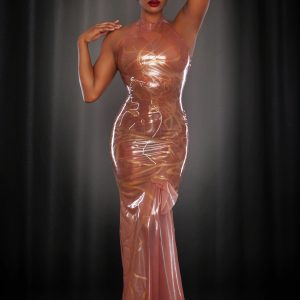What is an 'Average Bra Size?' (And Why Does It Mean Nothing Ever Fits You?)
Today's guest post is by Catherine Clavering of Kiss Me Deadly. For more on stats and bra fit (and why you can't trust every press release you read), check out one of her earlier articles for TLA: "Bra Fit Science: Why Sampling Methods Matter for Lingerie Research."
Stand back everyone, we're about to commit MATHS (Or MATH, if you're in the USA).
I know this is a lingerie blog and usually quite arty, but sometimes we need to talk numbers. Sadly, many people are allergic to numbers, possibly due to horrible teachers, terrible cultural expectations, or just sheer boredom.
This is an unfortunate situation since mass manufacturing - the method of production that has brought the price of clothing and undergarments down so much in the last century or so - relies heavily on a good understanding of numbers. Specifically, it relies on statistics, a word that tends to make people flinch and sometimes even cry.
When you get taught stats, it's all cards and coin tosses and fish, rather than anything you might need a in a career outside of a casino that serves seafood. This means most people fail to pick up anything useful, and then get into some major misunderstandings. How do these affect the lingerie industry? Let's start with one of the most popular statements.
"The average dress size is a US18/UK14 so why isn't every lingerie company a plus size company?"
Cora and I see variations on this comment all the time. It stems from serious confusion about what averages are.
If, like most people, you didn't really follow the whole “means, medians, and modes” section at school, then this next thing Will Blow Your Mind.
The average is NOT the same thing the size most people wear.
Yes, I know that sounds wrong, but let me lead you through it via the grisly medium of fingers.
Imagine you make gloves. Would you make gloves for people with hands that had 4 fingers and a thumb on each? Yes? OK, but the average number of fingers and thumbs is actually less than that.
Some people get born with extra fingers and some with less, but it's much more common for people to lose their fingers and thumbs to accident or illness. So the average number of fingers is less than 5.
Similarly, bras are usually made for people with 2 breasts. You don't really see anyone with more than 2, but you do get plenty of people with less than 2. Yet it wouldn't make any sense to produce bras with 1.85 cups just because that's the average.
This is because, when you do an average, its an “arithmetic mean." In other words, we take all the people, add up the total number of fingers, and then divide all the fingers by the number of people.
The problem with this is it gets skewed – pulled upwards or downwards by people who are unusual. The technical term for this is “statistical outlier." This is how you can end up having an average size that isn't the size most people wear. Size is notoriously skewed, so that the most often worn size is almost always less than the arithmetic mean average (wages also follow this pattern).
What you want in products is the thing that the most people can use, which means going for the mode – the most frequent value. Here's a graph of UK dress sizes from KMD fans.
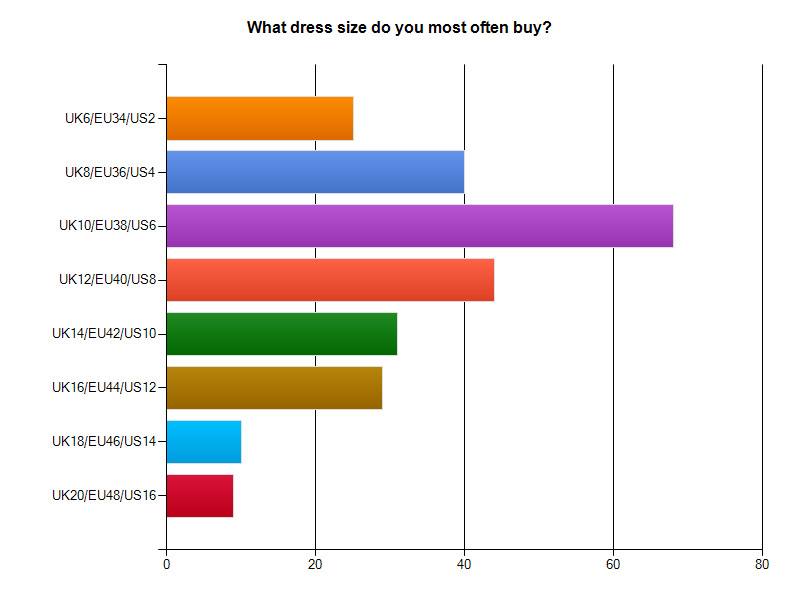
Via: Kiss Me Deadly
You can see that even though yes, the average UK dress size is a 16, the most frequently worn size amongst KMD fans is a UK 10. Which brings us to the next topic:
How Your Customer Group Affects Averages and Sizes.
The “average dress size” includes everyone from about age 18 to 100 and whatever. But even my extremely cool grandma isn't out buying fashionable undergarments (though she does appreciate a nice sparkly applique on a jumper). So if you're making lingerie, you probably want to size it around what's most commonly worn by women in the age range who buy from you.
Most companies won't release that sort of data, so here's ours. KMD has a pretty good spread of fans, from under 18 to over 80, but the people who actually buy regularly from us at full price (look, someone has to pay the bills... so fond as I am of the students buying on sale, I'm also basically waiting for you to grow up and get better jobs) are about 25-40.
As far as I can tell, given commercial secrecy, that age range of magic full price buyers is pretty typical. For cheaper brands, it can be more like 18-30. For mastectomy brands, we're talking 50+. As each decade passes, our bodies change, and generations as a whole often differ considerably (generally speaking, people get taller....by the time I die my 5'1 stature will be very peculiar indeed). All of these factors are taken into account when brands decide on a sizing range.
Customer group sizing needs also change by area. There's considerable variation even within Europe (we need to do taller garments for the Northern Europeans, the Netherlands and Germany - particularly longer bra straps), and we can't sell anything in China or Japan because everything we make is enormous by their standards.
So, back to the technical terms. The arithmetic mean is what most people do when asked for an average. The median is the middle (i.e. 50% of people are above, 50% below). The most frequent value is the mode. The mean is the average of all the numbers. It's the most affected by skew.
And that is why brands don't make for an average dress size – they make for the mode of dress sizes for their customer group.
How do averages and bra sizes play out?
A.k.a. "The average bra size is X so every company should automatically make this size/debut with this size/purchase more of this size!"
I started writing this a few months ago and got completely stuck on bra sizes. That's because you can't DO an average bra size.
Bra sizes are not sensible. Your cup size depends on your back size, so the same volume cup has a different label depending on what back size it's stuck on. Under these circumstances, how is anyone claiming to make an average? Do they add up all the back sizes and then divide them, then do the same to the cup sizes? Cup sizes aren't even a number, so how does that work? Also, that ignores the fact that they are related. Perhaps they average out the underbust and overbust measurements of women, and then work it out from them, but with half the UK using the +4 method and the other half using the +0 method, which are they using to do a theoretical average from? ARGH!
I am genuinely baffled. I strongly suspect that all the average bra sizes statistics are basically total rubbish. And that's before we get into the fact that there's even less consistency about what counts as a 34 band than what a UK size 16 really is. I've seen 34 bands with as much as 8 inches difference between them...and that's in a garment that's supposed to be much more technical about fit.
So let's ignore all of that. Let's imagine I hid in under the sofa, and let's imagine “the average bra size is 36DD” or whatever else you've heard.
Again, just because it's the average doesn't mean it's the most commonly worn size. And it doesn't mean it's the size bought most often by your customer base. To make the most money, you want to find two things: 1) a range of sizes the factory is happy to make and 2) the range of sizes you can sell at full price the easiest.
So, even if the average is the most commonly worn bra size for a country, is this relevant to individual brands? How many brands really provide bras aimed at every single woman from age 18 to 100+ with every body type imaginable? Are the other commonly worn sizes grouped around that size or are they all over the place?
You see, most brands and retailers will start instead from a size base that they know covers a reasonable range of their main customers, based on criteria like age range, geography etc.
Even if your customer base is large, it might not make sense to cater to all of it. For example, if you have four customer groups, some core sized, some plus size, some petite, and some small back/full bust... which will you choose? Because doing ALL of them will cost you a bomb. You need four different patterns for each bra style you do, plus fittings and samples, plus you'd have to grade (and possibly make) all the sizes in between for the factories minimum amounts, even if actually you knew only three sizes would sell .
Or... you might know that (and this is a magic stats thing) that 70% of folk fit within the 12-15 core sizes, and that 30% are in the rest of the sizes, but those 30% are spread out across more like 30 sizes. Which of those 30 sizes are worth doing, if any? How many more people of those sizes can you get to buy from you? Then remember to factor in that people who are in those sizes stop looking, and they especially stop looking in brands that are known for doing core sizes.
This is why bra sizes basically give everyone a headache and are made of wrong. Seriously, the whole thing makes me employ rude words.
Hopefully, all of you can now see the difference between the mean (the average) and the mode (the most often) and how that affects things that are made in bulk. I can honestly promise that this is a valuable piece of learning, and that next time you inevitably try on something that doesn't fit, you can blame it on skewed distributions and a mismatch of sample population and your tastes... rather than your body!
Ever done sizes stats before? Ever thought about them in relation to fashion? Let us know in the comments!
Save





